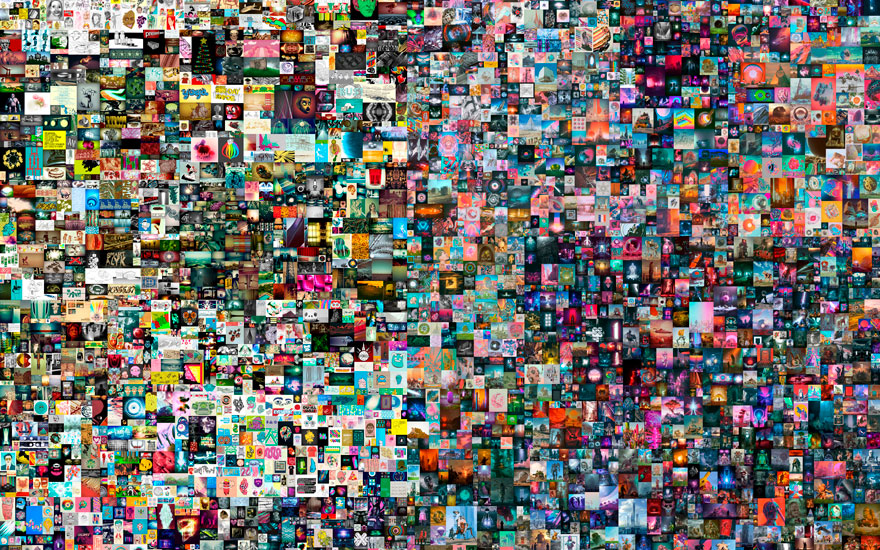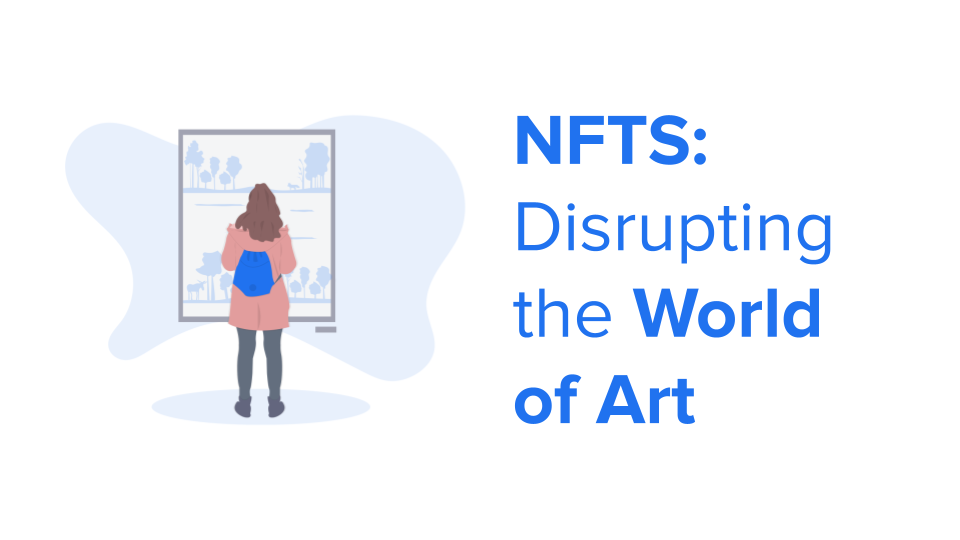This week, we broke down what exactly NFTs are, how the technology works, its roots and its future. In case you need a refresher, you can check it out here. Now let’s examine one special element in the world of NFTs.
NFTs can be anything from a meme, to a certificate to a ticket, but NFTs as an art piece have been the most revolutionary so far. Let’s check out how these tokens have disrupted the world of art!
For a very long time, digital art has been valued lower as critics do not value it as authentic as a traditional tangible art piece. Critics are also concerned about the copyright issues associated with buying digital art. Previously artists also had a tough time establishing their ownership over digital art.
The introduction of blockchain technology provides a strong solution to this problem. Artists have a clear record of their work verified by the blockchain without having to rely or trust record keepers or other parties. The token is also encrypted using cryptography to link the artist to their art. The smart contracts are set in place to ensure that the creator can enjoy the fruits of his labour. As well as to ease potential sales between the buyer and seller.
Ownership of digital art
NFTs and other forms of cryptocurrency are the first real digital ownership that we have enjoyed. Even if we take our own selfie, we don’t really have true ownership that we think we do. Different countries have various laws and interpretations over this copyright issue. Some countries will say the individual who physically pressed the camera button owns the photo, even if he doesn’t own the camera. The logic isn’t exactly fool proof and leaves a lot of room for loopholes, errors and copyright infringement. But the crux of the matter is we don’t have a legal proof or copyright over the selfie, it is more namesake. Hence, NFTs are the first phenomenon to establish true ownership over a digital asset or art piece.
Artists do need to claim legal ownership of their work before selling it. This is done by “minting” or “tokenizing” the art on the blockchain. No matter how many times it is bought and resold, it will always lead the piece back to its ultimate creator. Giving full due credit and ownership to the artist so that they can gain rightful recognition.
Perpetual existence
Artists enjoy the satisfaction of knowing that their work is established on the blockchain forever. This implies that once the NFT is tokenized on the network it can never be undone or deleted. In order to wipe out an NFT, every computer or node in the network will have to individually delete it, which is virtually impossible.
This makes it a safe haven for artists to store their art forever as opposed to a traditional piece of art. Traditional pieces can be subject to natural or man made forms of destruction, suppose an earthquake hits or a burglar steals it from a museum.
Auction houses
The most traditional and iconic auction houses are no strangers to NFTs. Top auction houses like Sotheby’s, Christie’s, Phillips say they’re not just in it for the money. They’re in it to also be a part of the community and ride along the wave of ar’s revolution. They wish to embrace all forms of the fresh new digital medium. Christie’s sold a Beeple’s NFT for $69 million. This record breaking sale made him one of the most valuable artists alive. The piece “Everydays – The First 5000 Days”, is a collage of 5000 digital pisces that Beeple created for his Everydays series.

On the other hand, Sotheby’s pulled in $26 million for a set of Bored Apes NFT. Project “Bored Apes Yacht Club” is one of the most popular and highly sought projects in history. It is a collection of 10,000 unique apes living on the Ethereum blockchain. All in all, embracing the change rather than shying away from it has proved extremely beneficial for these conventional houses.


